22 timeless lessons in running a successful farmers’ market stand
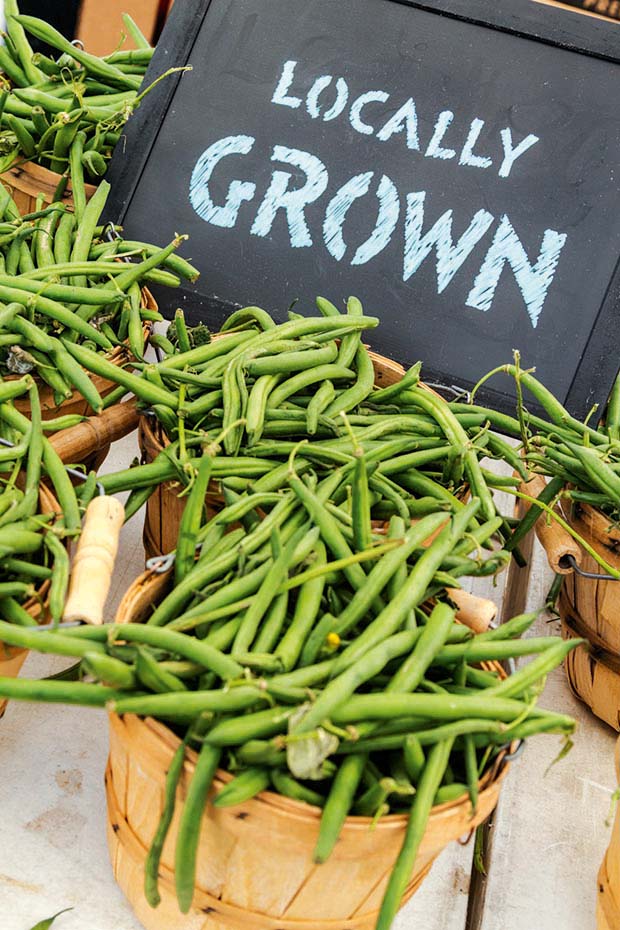
The woman who started London’s hugely successful farmers’ market gives her timeless tips for selling at a market.
Words: Nina Planck
Nina Planck is a food author and businesswoman who founded the London Farmers’ Markets which now runs 20 year-round markets. She grew up on a family farm in the USA and started selling fresh produce from roadside stands when she was nine years old. Her family made a living and sent their two children to college on the proceeds of farmers’ markets. Her books include The Real Food Cookbook, The Farmer’s Market Cookbook, Real Food: What to Eat and Why, Real Food for Mother and Baby.
These are things we know work well. We are still learning. Do what works for you. Many of the examples in this story are about fruit and vegetables, but the principles apply to everything you see at farmers’ markets, including plants, flowers, and bread. I also include specific comments for meat, dairy, and poultry producers
1. The more information the better (prices are the bare minimum)
Good signage is invaluable. Go beyond the basics and include weight, cooking instructions and any other explanations that may be useful (or just plain fun). Customers love signs and explanations. You must label everything with a name and a price. For some reason, food without prices doesn’t sell well. Many people are too shy to ask directly about prices. But there is much more you can say:
• How much does it weigh?
• How do you cook it?
• What is it called?
• How hot are the chillies?
• How is it different?
• Where is your farm?
• Why is it scarce? eg, because we had a frost
• Why do the apples have spots? eg, we don’t use fungicides
Write a description of your farm (location, size, ownership, family history, crops, animals, climate, workers). Write a description of your methods of production. Are you organic? What does integrated pest management mean? What breeds do you raise and why?
If you answer a question often, write it down. Save your time and help shy customers who will read a sign but won’t ask you a question. Bring articles and information about your farm and its role in agriculture. When an agribusiness meat processor recalls tons of beef because of E. coli, or E. coli is found on organic lettuce, be ready to answer questions from customers. Tell them what you know about agriculture, food safety or animal welfare. Good customers want to learn about farming and foods. You must help them.
A brochure with cuts and prices is particularly helpful for meat, poultry, and cheese producers, especially when your prices and cuts are steady throughout the season.
Recipes are the indispensable handout.
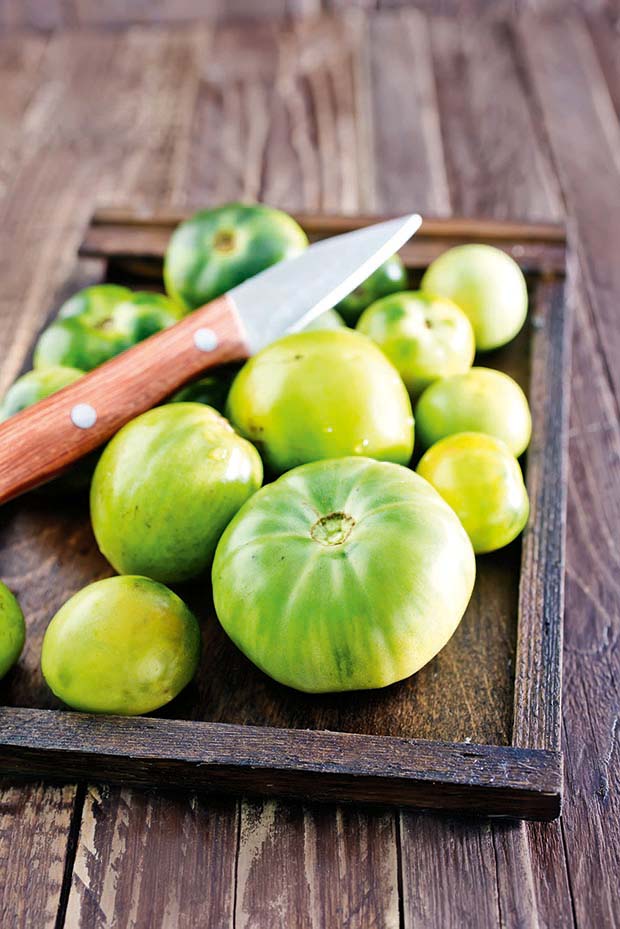
2. Charge what it’s worth
Is it superior, rare, organic? Better food is worth more. When you have a superior product (better than the supermarket or even the farmer next door), charge more. Some customers are price-conscious and some aren’t. When you give away good produce at rock-bottom prices, customers often buy the same amount anyway. The refrigerator is only so big, and a family only eats so much.
If your product is rare (a scarce variety or the only one on the market), charge what it’s worth. If your product is organic, price accordingly. Customers do expect value for money. Give them bargains when you have a lot of something, or if it’s inferior (too small or slightly bruised or too old).
When you do have a bargain price, promote it with large signs, visible placement, multiple locations, and polite suggestions. Offer discounts for volume which means you give a bargain to priceconscious shoppers but still get top price from the people who want just a few.

3. Offer samples
People love to try things – teach them about your favorites. If you love the taste and amazing health benefits of Monty’s Surprise apples, say so. Twenty years ago, we started to teach people that pickling cucumbers are wonderful in salads. They have thinner skins and better flavour than standard cucumbers.
We also kept searching for new varieties and now we sell Armenian, European, and Middle Eastern types which are better yet. We sample them all, and many people tell us they are the best they’ve tried. Give away a new variety just to encourage customers to try unusual things.
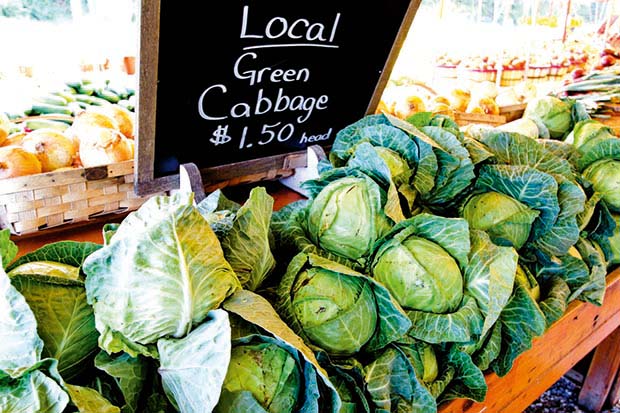
4. Value for money is always right
It’s not a question of high or low prices. A good market – and a good stand – has high-end treats, less expensive foods in larger quantities, and items in between. It’s a question of the right price. Your prices may change during the market, from week to week, and throughout the season.
Don’t be afraid to change prices. When you do, you must change the sign immediately and tell your staff. It helps to make an announcement about a price reduction as you change the sign. People like to know. If it doesn’t sell, the price is probably wrong. Or the customer does not want that product, or isn’t attracted by the way you’re selling it.
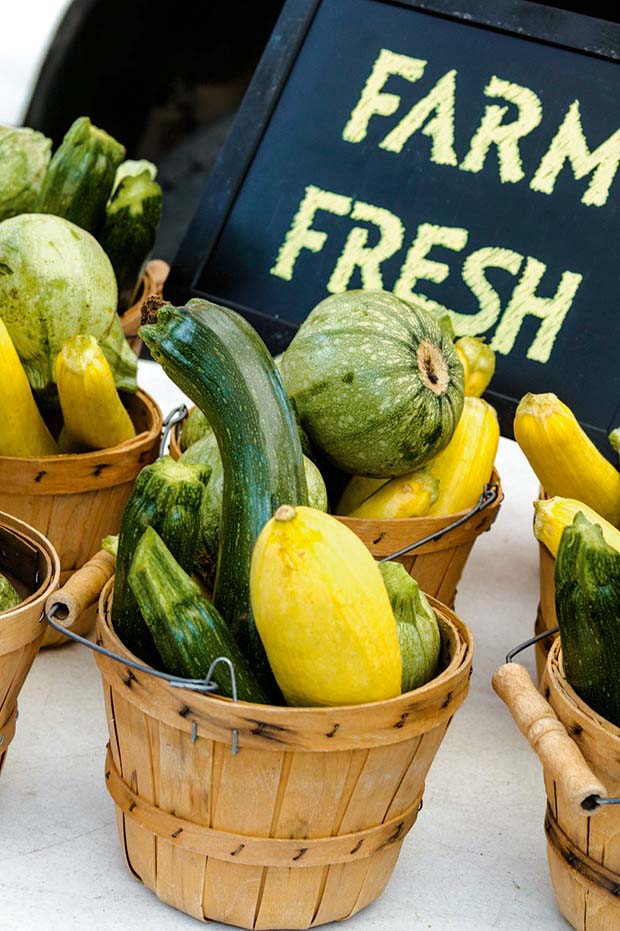
5. Suggest ideas, especially for familiar or surplus produce
People often just don’t know what to do with things they see. Tell them how you like to cook it. They often want to try something new, especially with familiar, well-supplied vegetables like zucchini. When you have a glut, customers feel overwhelmed by the surplus and ever-lower prices won’t inspire them. You must give them more ideas, such as zucchini bread, zucchini soup, zucchini frittata, grilled zucchini, etc…
6. Eat your own food
Nothing is more discouraging to me than hearing “I don’t know what it tastes like” from a farmers’ market salesperson. Anyone who sells at a farmers’ market should eat the food.
7. Give your personal opinion
You must be able to answer objective questions: is this apple sweet or tart? Does this onion store well? Is this cut of meat good for the barbecue? However, customers also appreciate personal comments. If you have favourites, say so. If the customer is asking about apples but you don’t especially like apples, be honest (“I’m not a great apple eater, but people say these have the strongest flavour”) and stick to objective descriptions (“Good for baking”). The customer will admire you for it.
8. Tell them how to keep it
No-one likes to waste good food (or flowers). If you tell customers how to keep what they buy fresher for longer, they won’t fret about buying too much.
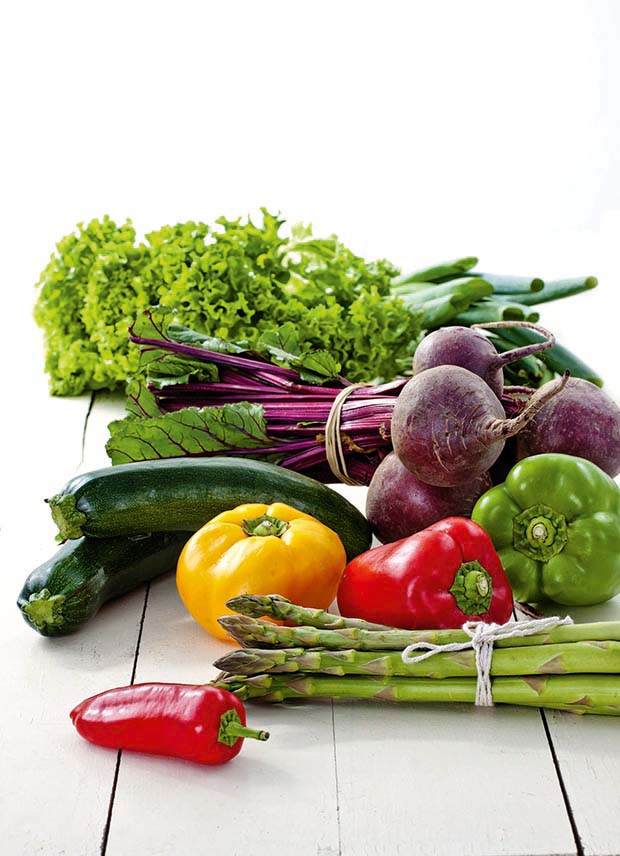
9. Quality is everything
By the age of 12, I was running my family’s farmers’ market stand on my own. The dual importance of a high quality product and a high quality relationship with regular customers was one of my earliest lessons.
Ultimately, farmers’ markets will not succeed simply because we are farmers and the folks down the road are not. They will succeed because the produce is superior to what consumers can buy elsewhere and the price is right. If your peaches are green or mealy, your corn is immature, your beans are tough, your meat is poorly packaged, your bread is stale, your lettuce is wilted, or your tomatoes are tasteless, customers won’t come back. Taste your products. Do they measure up?
We are lucky that farmers’ market customers are discerning; that’s why they shop at the farmers’ market. But with regular exposure to fresh, seasonal, highquality produce, they will become more discerning, not less. You cannot give them the same old apples week after week, or uneven quality, or bad prices – and expect them to come back simply because you are a farmer. They will shop elsewhere.
10. Choose good varieties and breeds
Supermarkets offer the same cosmetically perfect bland foods, from apples to bread to cheese. We need to offer something better, and different: the sweetest strawberries, handmade bread, pastry with real butter, raw honey, fresh eggs, marbled, well-hung beef.
For processed foods, use good ingredients and tell customers why your jam or cheese or bread is different, like that it’s handmade, cured properly, or not treated with chemicals. Flavour is the most important quality in food. But there are other ways to distinguish your product from what they’ll find in a supermarket. It should be fresher because it hasn’t travelled far, it should be exactly the right maturity and texture (something supermarkets often get wrong because of transportation needs which means hard pears and mealy tomatoes).
Rarity itself can be a virtue. Grow traditional and unusual varieties and breeds. If your product has a good quality, eg plum tomatoes make thick sauce, a breed of beef is good on the barbecue because it’s lean, a peach is easy to peel, then say so.
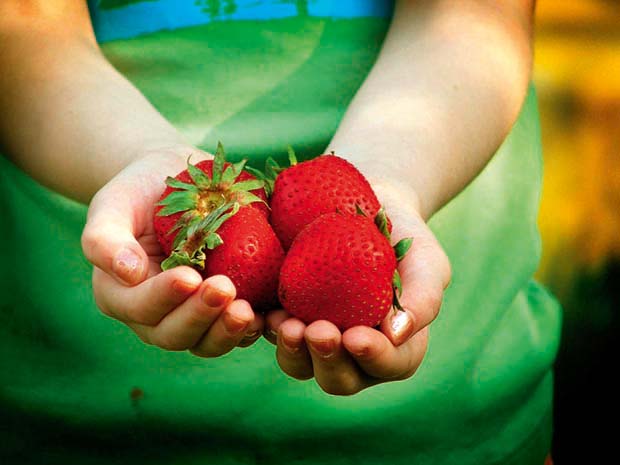
11. Have something to sell all season
This is especially critical for fruit and vegetable farmers. It’s not worth coming to market only to sell asparagus for three weeks a year. To make a good return from markets you need to have spring, summer, autumn and winter crops. Extend the season by growing cold weather crops, or by planting several batches of carrots for a steady supply of young carrots if they are popular. If you want to sell seriously at markets, you may need to change your growing patterns.
12. Sell a variety of products
Presentation was a gradual lesson for my family, who used to simply open the doors of our Econoline van and spread our wares out on the pavement back in the early 1980s.
A stand with one product (only sausages, potatoes, or juice) holds the attention of customers for only so long: either they want the one thing you have to sell or they don’t. Sell a variety: many different vegetables (even in small quantities), flavours of juice, cuts of meat. That way, customers will stay longer and spend more.
13. Make bags readily available
Place bags everywhere within easy reach of customers. Customers are blind when it comes to bags – this is a farmers’ market mystery.
14. Work with the market manager
If you have a problem or suggestion, tell the market manager. Are the market hours right? Do you have requests from customers for something no producer is supplying? Tell the manager about your farm. The manager serves you and represents you to the public.
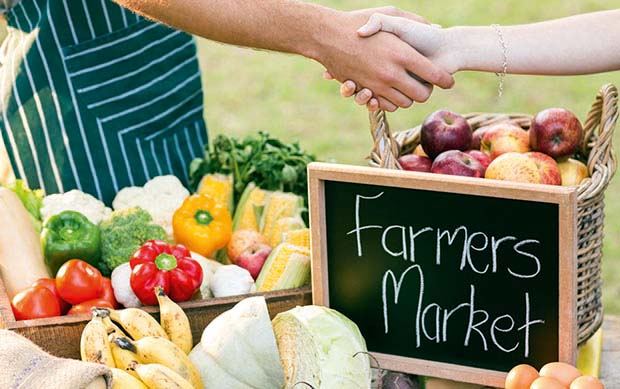
15. Cultivate loyal customers
We aim to build a base of customers who shop regularly at farmers’ markets. We don’t want 10,000 one-time-only purchases from the occasional passer-by. We want 100 people to shop 100 times or 1000 people to make 10 purchases. We want people to come to market to spend $10 to $40, not $2.50. That means people who are doing the weekly shopping at the farmers’ market, often for a family, week in and week out, and it usually means people who come for quality, not for rockbottom prices.
You must remind customers that the market is open every week. Encourage them to bring friends, colleagues, family and neighbors. Tell them about other farmers’ markets you attend.
16. Pile it high and fill it up
You must restock constantly. Consider carefully who takes money and who restocks at market. Some people are better at one job than the other. Always use the smallest container rule. The produce you have should always be in the smallest container in which it fits. If you start out with a crate of apples, keep it full throughout the whole market. If you have only half a crate left, find a smaller basket.
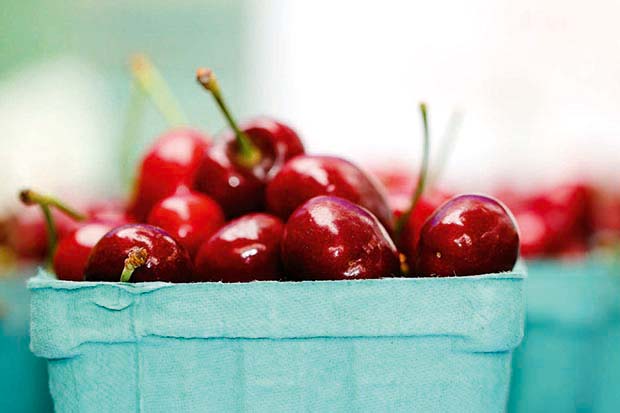
By the end of market, if there’s one fennel bulb in a small basket, a few bell peppers in a box, and some squash lying off to one side, put it all in one basket. Customers dislike buying the last of anything – it looks like the dregs, but a smaller container looks like abundance
17. Don’t be afraid of competition
A good market has a balance of producers with a balance of produce and prices. Good markets shouldn’t have too many producers or too many large operations. For one thing, such markets become impersonal. There shouldn’t be more producers than the customers can support, or more producers of one food than demand for it. But the best markets have plenty to offer customers.
Farmers’ markets are a basic form of cooperative. You all agree to sell by the rules for a few hours each week. You are stronger together than alone. Why? Every market needs a critical mass of producers or customers won’t bother to come. They’ll go to the supermarket instead, where they know they can “get everything.”
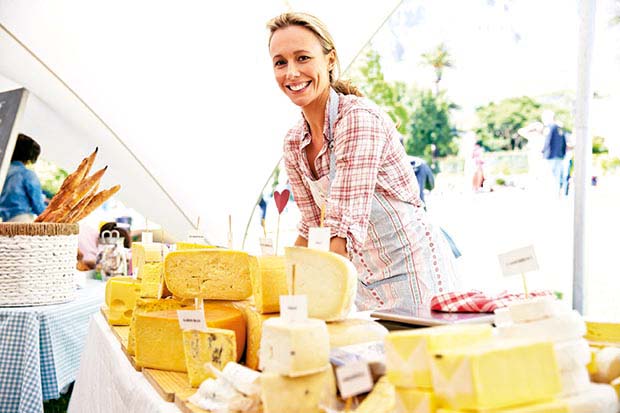
To attract good customers, the pork farmer needs the vegetable farmer, the honey seller needs the baker, and the egg producer needs the fruit grower. Imagine how little business we would do if each stall were on its own street corner instead of all gathered together at the farmers’ market. Regular customers especially expect to be able to do a full week’s shopping, and regular customers spend more money than passers-by.
This also means that one vegetable or fruit stall is not enough. Customers want – and deserve – a mix of produce, prices and styles. No farmer is guaranteed a monopoly. It seems like a paradox: at market, the farmers need each other and they also compete with each other.
In the long run, the answer to competition is stability. The goal of any farmers’ market is to serve producers and consumers. Ideally this is accomplished through a regional network of markets managed by the same organisation. That means enough markets for the producers, enough producers at each market, and enough choice for customers. Each producer’s business becomes more stable as the markets become more regular. Stability doesn’t mean that in five years you will be growing what you’re growing today, or that customers will buy it.
18. Make chilled foods visible
Meat, poultry, dairy, and egg producers, and those selling chilled processed food like pasta, have particular challenges in display. You need to show off your food just as the peach and tomato farmers do, piled high and colourful and seductive. Sometimes a meat or poultry farmer seems to be selling nothing at all. There is a sign with prices – or there should be – but there’s no food in sight.
At many farmers’ markets, including London Farmers Markets, there is access to electricity. Farmers use chilled glass display cabinets, which look beautiful and allow them to sell fresh meat, sausages, meat pies, smoked fish, cheese, and more.
Meanwhile, most producers sell fresh or frozen meat from plastic cooler chests. No one can see the lovely foods and they can’t choose their own. They can’t browse without making a commitment, and they find that embarrassing. These are all barriers to more sales.
I admire the set-up of a buffalo producer, Cibola Farms who sell at a farmers’ market in Virginia, USA. Cibola has created the sense of a butcher shop in the open air, with a U-shaped stand to invite customers in without making a commitment, so browsing is possible. Customers are invited to rummage through the plastic bins for frozen meat, so self-selection is possible. One improvement they might consider is a nice color photo of each cut on the chest as their white plastic containers aren’t very distinctive.
19. Bring photos of your farm
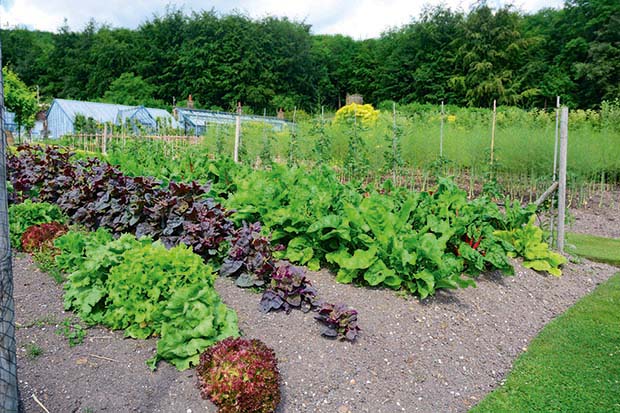
Bring not only your food but also your farm to market. Pictures of crops, animals, processing (say, making cheese), and workers with crops and animals are interesting and charming to non-farmers and bring life to your stand. Pictures also reinforce the message that we are all linked to farms through food.
20. Be cheerful and active
A bored, sullen person behind the counter is fatal. Don’t be hyper sales monster, but be enthusiastic and friendly. You must move about the stand. Walk to the front of your stand every 10 minutes for the customer’s view. Pick up trash, even if it’s not yours. You must demonstrate your high opinion of your products. You cannot be ignorant about products. You must give customers a reason to buy. Avoid sarcasm, indifference, smoking, music, and the impression “I just work here.”
21. Perfect your marketing equipment
Have a good sign box. Do not neglect the infrastructure of marketing: have a box with marker pens, blank paper, tape. Organise signs by product in a small plastic recipe box. The PEPPERS file, for example, should contain all the pepper signs (bell, hot, frying) with various prices and quantities. When you get to market, you need only choose the sign you need.
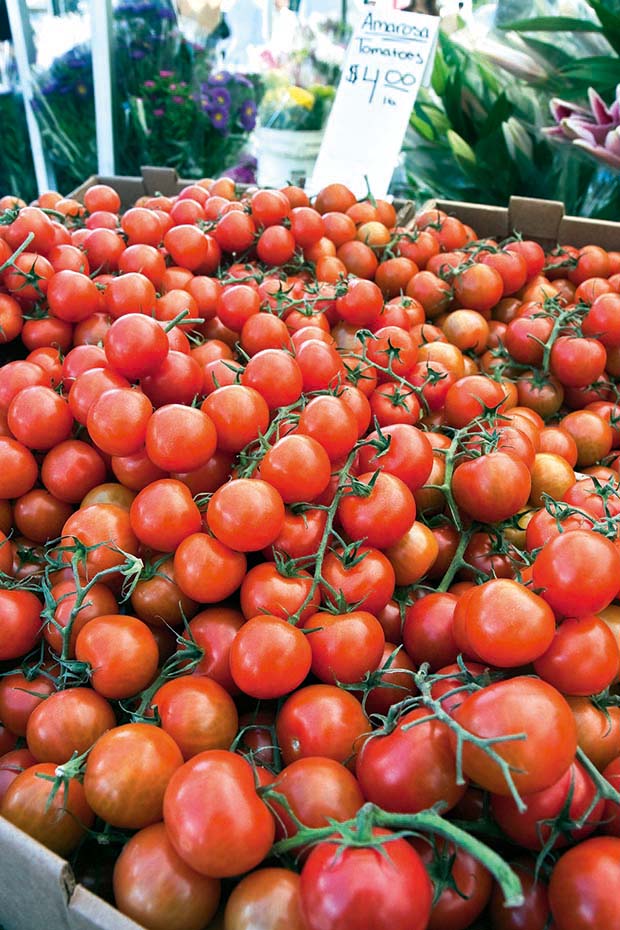
Create a market report. A market report tells you how much customers bought that week, what price it was sold at, and when it sold out. This means each week you get a good idea of what the market can sell, and you can refer back to those reports to see what you sold at the same time last year.
22. Run the numbers
Like most small business owners, farmers seldom discuss how much they make, but my parents, Chip and Susan Planck, have always believed that the success of farmers’ markets depends on the success of farm businesses and sharing information.
For example, on August 29, 1999, their stand’s college-age workers were selling vegetables at a market in Washington, DC and made US$4800 in four hours. It was a market record (since surpassed); among many other things, they sold 600kg of tomatoes for US$4 a kilogram, about half the total sales. They sold out of tomatoes.
• Lesson 1: Specialise – my parents grow 25 varieties of tomatoes.
• Lesson 2: Grow the best varieties – if it isn’t delicious, they don’t grow it.
• Lesson 3: Give samples – their customers ask for tomatoes by name.
• Lesson 4: Treat it properly – their tomatoes are ripe and unbruised.
• Lesson 5: Charge what it’s worth – they’re not fancy, but customers think their tomatoes are worth US$4/kg. Some of their prices are higher than the supermarket or the stand next door, some lower. Between you, the competition, and the customer, you learn what it’s worth. My parents pay a fairly substantial fee to be at this market and are glad to do it because between this and other markets, my parents are able to farm for a living.

